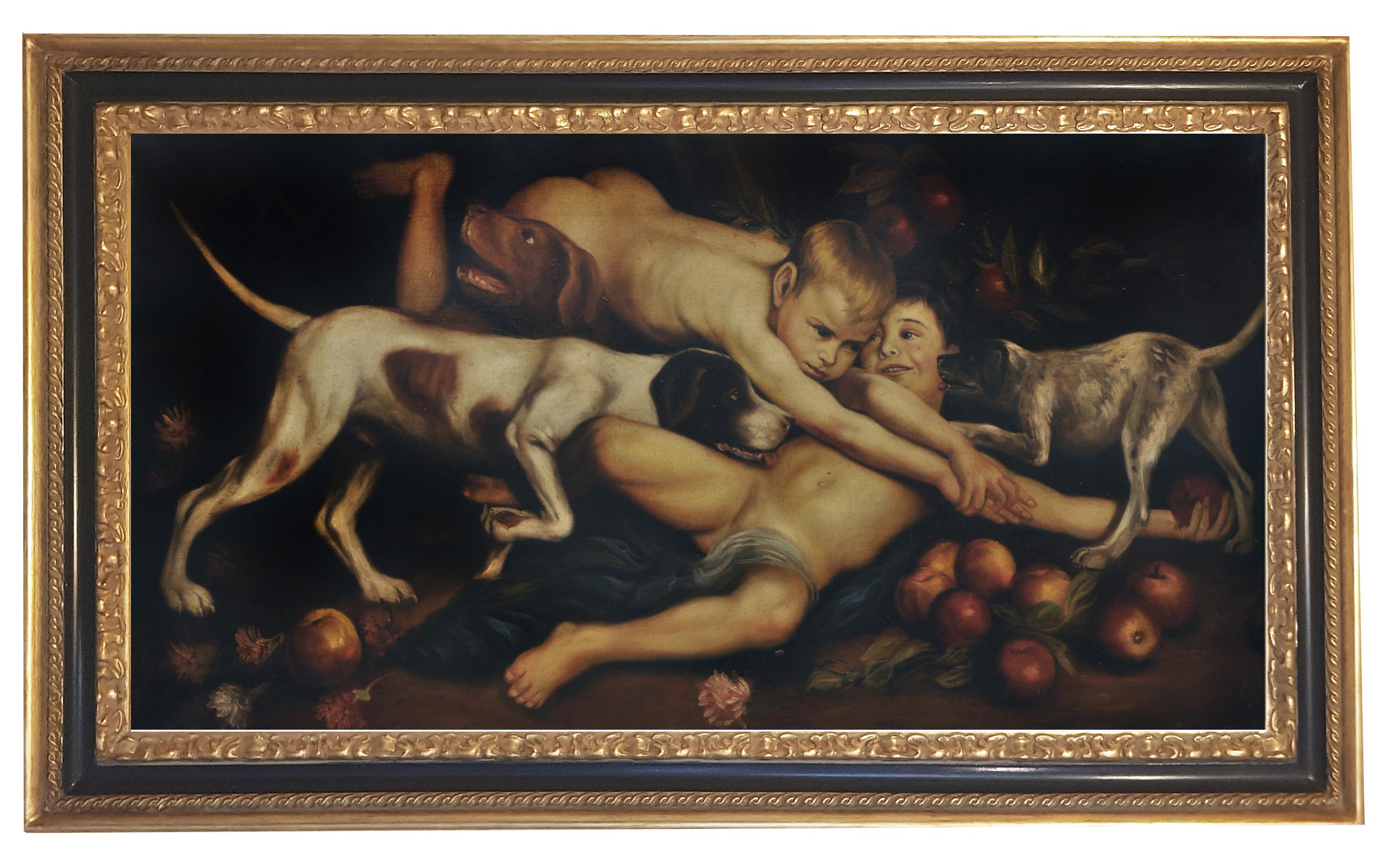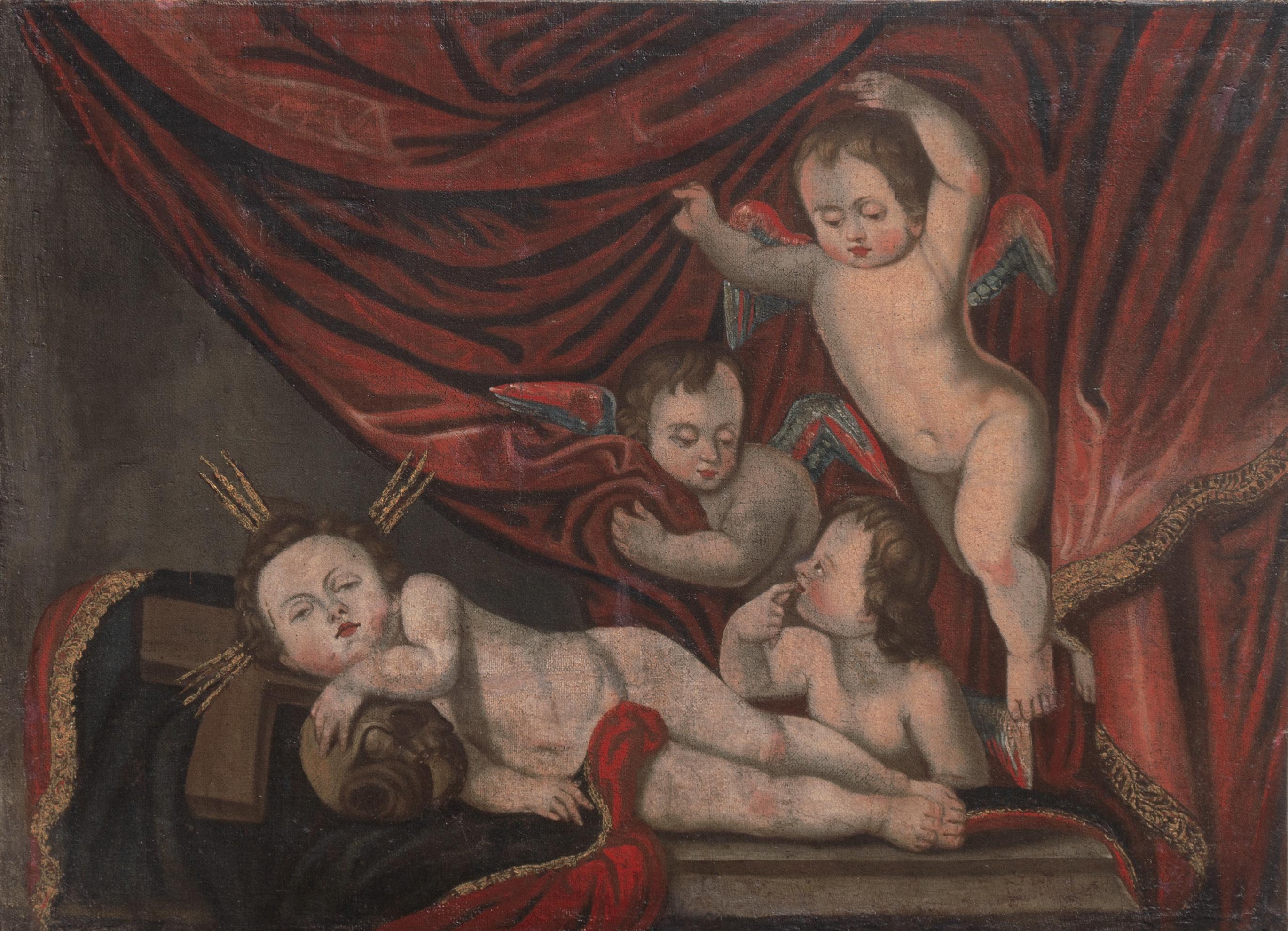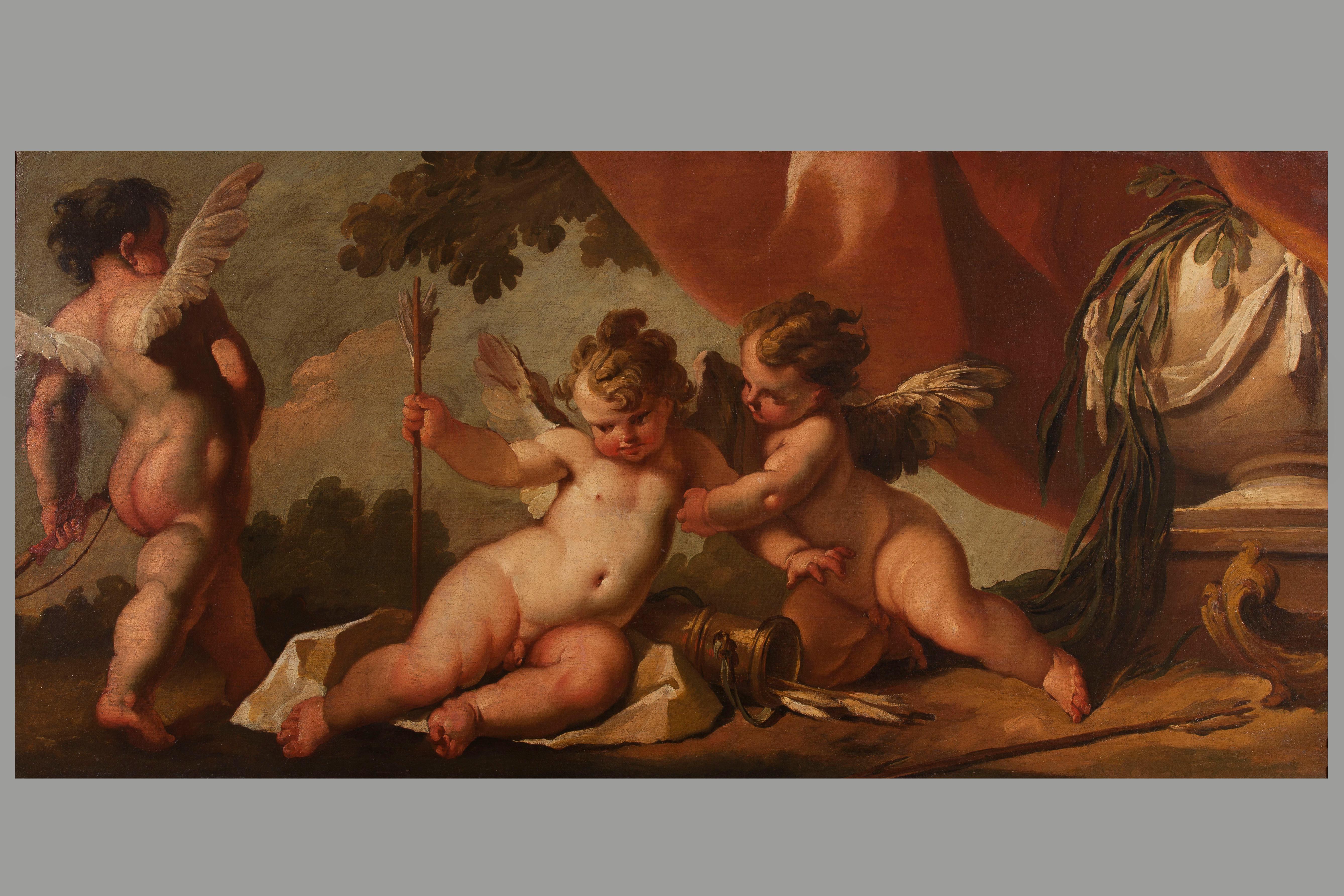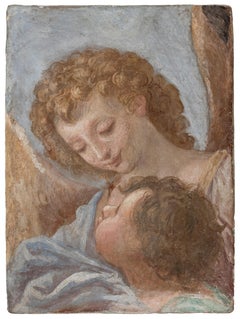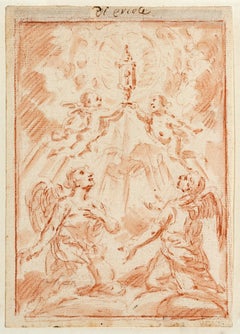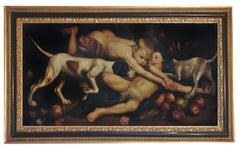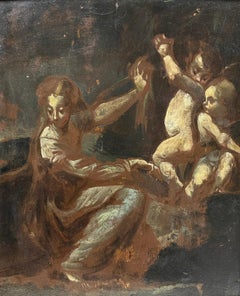Items Similar to Three Angels
Want more images or videos?
Request additional images or videos from the seller
1 of 6
Domenico Piola the ElderThree Angels
$26,000
£19,647.34
€22,687.86
CA$36,331.07
A$40,312.39
CHF 21,116.50
MX$494,338.10
NOK 268,594.56
SEK 253,541.81
DKK 169,197.60
Shipping
Retrieving quote...The 1stDibs Promise:
Authenticity Guarantee,
Money-Back Guarantee,
24-Hour Cancellation
About the Item
Provenance:
Robert L. and Bertina Suida Manning, New York, until 1996
Private Collection, USA
One of the leading artists in Genoa during the second half of the seventeenth century, Domenico Piola came from a successful family of artists, renowned for their many illusionistic ceiling programs throughout Genoese churches and palaces. A prolific draughtsman and painter, Domenico oversaw an extremely productive studio. In addition to his collaborations with numerous other artists, Domenico also provided many designs for book illustrations and prints that circulated throughout Europe, earning him international exposure and high acclaim in his own day.
As Dr. Anna Orlando has indicated (written communication), the present work is an early work by Piola, datable from the late 1640s. At this time the young artist came strongly under the influence of Castiglione and Valerio Castello, while admiring the works of Giulio Cesare Procaccini. Piola’s works from this period are exuberant and fluid, and the artist’s love of portraying children is evident from the angels and putti that populate both his altarpieces and more intimate paintings.
The present work depicts three angels or putti, one hugging another, who holds an apple in his hand and whose hair is tied in a soft-blue bow. It is a charming work, as each of the children seems content, even joyous. A similar characterization of the figures is to be found in other paintings by Piola of this date—such as the heads illustrated below (Figs. 1-4).
- Creator:Domenico Piola the Elder (1627 - 1703, Italian)
- Dimensions:Height: 10.875 in (27.63 cm)Width: 14 in (35.56 cm)
- Medium:
- Movement & Style:
- Period:
- Condition:
- Gallery Location:New York, NY
- Reference Number:1stDibs: LU1025778331

About the Seller
5.0
Recognized Seller
These prestigious sellers are industry leaders and represent the highest echelon for item quality and design.
Established in 1997
1stDibs seller since 2012
21 sales on 1stDibs
Typical response time: 12 hours
- ShippingRetrieving quote...Shipping from: New York, NY
- Return Policy
Authenticity Guarantee
In the unlikely event there’s an issue with an item’s authenticity, contact us within 1 year for a full refund. DetailsMoney-Back Guarantee
If your item is not as described, is damaged in transit, or does not arrive, contact us within 7 days for a full refund. Details24-Hour Cancellation
You have a 24-hour grace period in which to reconsider your purchase, with no questions asked.Vetted Professional Sellers
Our world-class sellers must adhere to strict standards for service and quality, maintaining the integrity of our listings.Price-Match Guarantee
If you find that a seller listed the same item for a lower price elsewhere, we’ll match it.Trusted Global Delivery
Our best-in-class carrier network provides specialized shipping options worldwide, including custom delivery.More From This Seller
View AllA Guardian Angel and a Child
Located in New York, NY
Provenance:
Cornelius Vanderbilt, New York; by whom gifted in 1880 to:
The Metropolitan Museum of Art, New York (80.3.673); deaccessioned and sold:
Christie’s, New York, 12 June 19...
Category
17th Century Old Masters Portrait Paintings
Materials
Terracotta, Gesso
Madonna and Child with Angels in the Clouds
Located in New York, NY
Provenance: Charles H. and Virginia Baldwin, Claremont, Colorado Springs, Colorado ca. 1907-1934; thence by descent until sold in 1949 to:
Charles Blevins Davis, Claremont (renamed Trianon), Colorado Springs 1949 -until gifted in 1952 to:
The Poor Sisters of Saint Francis, Trianon, Colorado Springs, 1952 until acquired, 1960, by:
John W. Metzger, Trianon, renamed as the Trianon School of Fine Arts, Colorado Springs, 1960-1967; when transferred to:
The Metzger Family Foundation, Trianon Art Museum, Denver, 1967 - 2004; thence by descent in the Metzger Family until 2015
Exhibited: Trianon Art Museum, Denver (until 2004)
The present work is a spectacular jewel-like canvas by Amigoni, rich in delicate pastel colors, most likely a modello for an altarpiece either lost or never painted. In it the Madonna stands firmly upon a cloud in the heavens, her Child resting on a delicate veil further supported by a cloud, as he gently wraps his arm around his mother’s neck. From above angels prepare to lower flowers and a wreath, while other angels and seraphim surrounding the two joyfully cavort.
Dr. Annalisa Scarpa, author of the forthcoming monograph on Jacopo Amigoni...
Category
18th Century and Earlier Figurative Paintings
Materials
Canvas, Oil
Angels in Adoration
Located in New York, NY
Provenance: Private Collection, USA.
This drawing is by Ercole Procaccini the Younger, who represents the final generation of painters in the storied Procaccini family. The son of C...
Category
Early 17th Century Baroque Drawings and Watercolor Paintings
Materials
Paper, Chalk
Joseph Holding the Christ Child
By Pietro Bardellino
Located in New York, NY
Provenance: Private Collection, Argentina.
A work of great delicacy and intimacy, this small painting on copper by Pietro Bardellino treats a subject which grew in popularity during the Baroque period: Saint Joseph and the Christ child...
Category
18th Century Baroque Paintings
Materials
Copper
The Assumption of the Virgin
Located in New York, NY
Provenance:
Unidentified collector’s mark “D.G.R,” lower right (Lugt 757b)
Wilhelm Suida (1877–1959), New York; by descent to:
Robert L. and Bertina Suida Manning, New York, until 1996
Private Collection, USA
This impressive drawing of the Assumption of the Virgin is the work of the Genoese artist Giovanni Battista Paggi. The son of a nobleman, Paggi received a humanist education and was a self-taught artist. According to Paggi’s first biographer, Raffaele Soprani, it was only after encountering Luca...
Category
16th Century Old Masters Figurative Drawings and Watercolors
Materials
Paper, Ink, Pen
Two Scenes of Diana and Actaeon (a pair)
By Giovanni Battista Viola
Located in New York, NY
Provenance:
Robert L. and Bertina Suida Manning, New York, until 1996
Private Collection, USA
Giovanni Battista Viola was born in Bologna a...
Category
17th Century Baroque Landscape Paintings
Materials
Copper
You May Also Like
CHERUBIM PLAYING - Italian School - Figurative Oil on Canvas Painting
By Giulio Di Sotto
Located in Napoli, IT
Cherubim playing - Giulio Di Sotto Italia 2004 - Oil on canvas cm. 50 x 100
Gold dilded wooden frame available on request.
The proposed painting represents two putti playing ..
Cle...
Category
Early 2000s Old Masters Figurative Paintings
Materials
Canvas, Oil
Angelic Cherubs with Classical Figure in Wilderness Finely Painted Preparatory
Located in Cirencester, Gloucestershire
Figure with Cherubim in Wilderness
Italian School, 17th century
oil painting on wood panel
framed 13 x 11 inches
condition: overall for its age very good, though the work is most likely a preparatory...
Category
17th Century Old Masters Figurative Paintings
Materials
Oil, Wood Panel
CHERUBIM PLAYING - Italian School - Figurative Oil on Canvas Painting
By Giulio Di Sotto
Located in Napoli, IT
Cherubim playing - Giulio Di Sotto Italia 2004 - Oil on canvas cm. 50 x 100
The proposed painting represents two putti playing ..
Clear contrast of chiaroscuro, with the two cherubs ...
Category
Early 2000s Italian School Figurative Paintings
Materials
Canvas, Oil
'Cherubs Playing', Angels, Amorini, Memento Mori, Naive, Baroque Religious Oil
Located in Santa Cruz, CA
An early eighteenth-century, Italian baroque figural oil showing a group of cherubs or Amorini grouped together before red velvet drapes, one reclining on a wooden cross and wearing ...
Category
Early 18th Century Baroque Figurative Paintings
Materials
Canvas, Oil, Board
Fine Italian Old Master Oil Painting Angel & Saints Appearing to Figures
Located in Cirencester, Gloucestershire
Artist/ School: Italian Old Master, 18th century
Title: Angel and Saints appearing to figures, one dressed in a white ruff collar.
Medium: oil on canvas...
Category
Early 18th Century Old Masters Figurative Paintings
Materials
Canvas, Oil
18th Century by Gaspare Diziani Cupids at play Oil on canvas
By Gaspare Diziani
Located in Milano, Lombardia
Gaspare Diziani (Belluno, Italy, 1689 – Venice, Italy, 1767)
Title: Cupids at play
Medium: Oil on canvas
Dimensions: without frame 85 x 175 cm – with frame
Publications: La Pittura...
Category
18th Century Old Masters Figurative Paintings
Materials
Canvas, Oil Crayon
More Ways To Browse
Baroque Painting Angel
Bow Tie Painting
Procaccini Giulio Cesare
Robert Phillip Nude Painting
Studio Henry Wilson
Used Tuba
Vintage Big Eyed Girl Art
W H Morley
Alessandro Casetti
Andrea Del Sarto
Bigelow Illustrations
Cowboy Bucking Horse
Cowboy With Lasso
Dance Card Antique
Daniel Berman
Diana Painting 18th Century
Douglas Bourgeois
Ferdinand Leger
